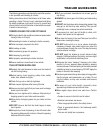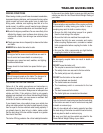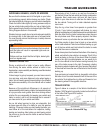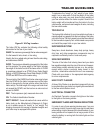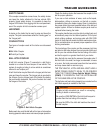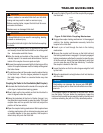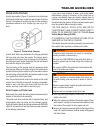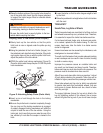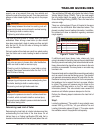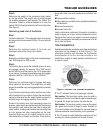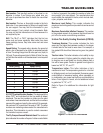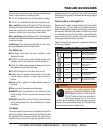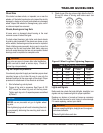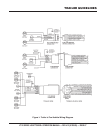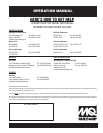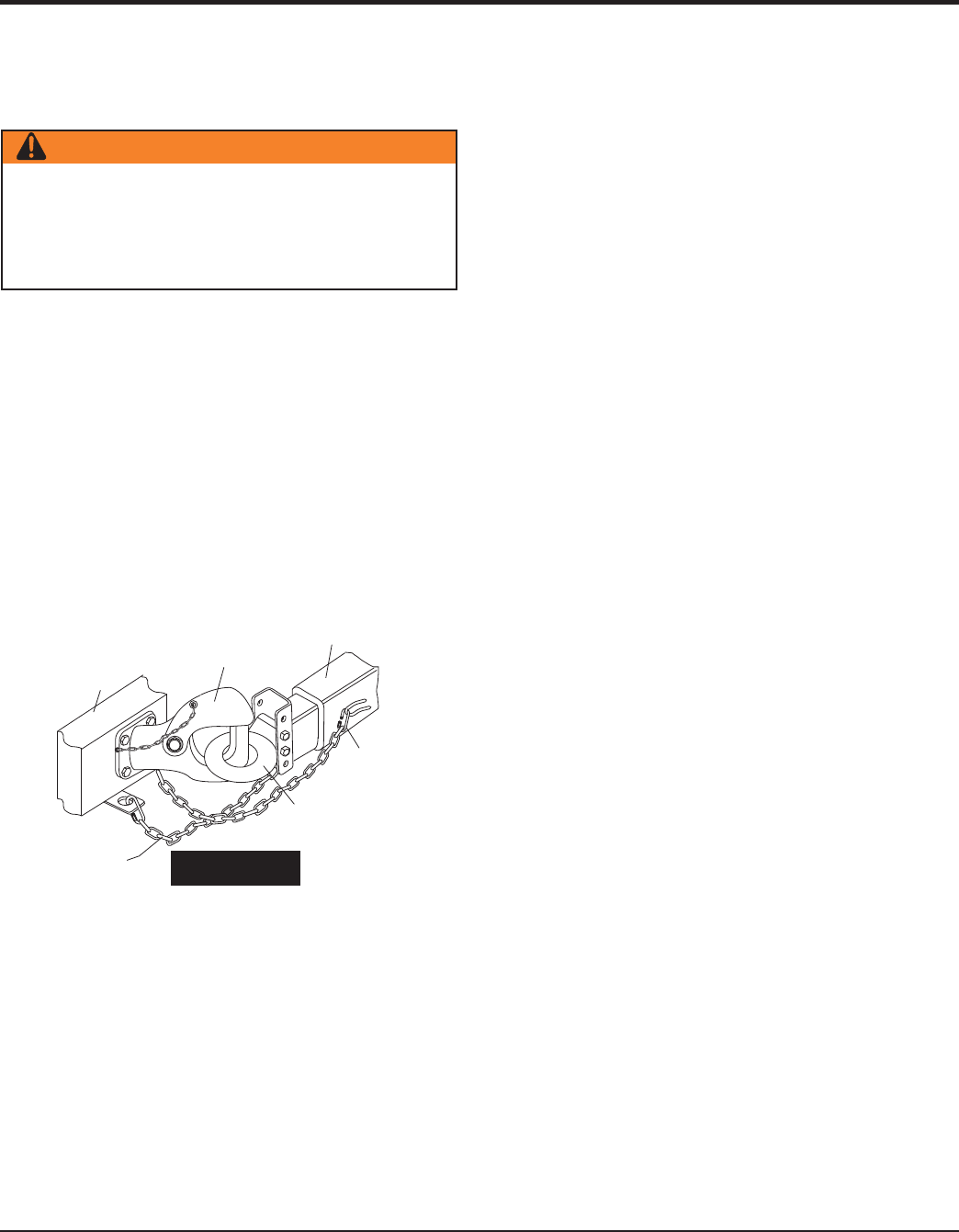
LT12 SERIES LIGHT TOWER • OPERATION MANUAL — REV. #12 (01/20/09) — PAGE 61
Raise the bottom surface of the coupler to be above the
top of the pintle hitch hook. Use the tongue jackstand
to support the trailer tongue. Wood or concrete blocks
may also be used.
Coupling Trailer to Tow Vehicle (Pintle Coupler)
Slowly back up the tow vehicle so that the pintle
hitch hook is near or aligned under the pintle eye ring
coupler.
Using the jackstand at the front of trailer (tongue), turn
the jackstand crank handle to raise the trailer. If the pintle
eye coupler does not line up with the pintle hitch hook,
adjust the position of the tow vehicle.
OPEN the pintle hook locking mechanism (Figure G).
Place the hook inside the eye coupler. CLOSE the pintle
hook mechanism.
Attaching Safety Chain (Pintle Hitch)Figure G.
Insert a pin or lock through the hole in the locking
mechanism.
Be sure the pintle hook is inserted completely through
the eye ring and the locking mechanism is engaged.
A properly engaged locking mechanism will allow the
coupler to raise the rear of the tow vehicle. Using the
trailer jack, test to see that you can raise the rear of the
tow vehicle by1-inch after the coupler is locked to the
hitch.
WARNING
A defective pintle hitch not properly fastened can result
in uncoupling, leading to death or serious injury.
Be sure the pintle hook is securly tighten to the tow
vehicle before coupling the trailer.
TRAILER
TONGUE
SAFETY C
H
MASTER
L
TOW
VEHICLE
C
R
OSS
B
O
TH
IMPORTANT!
PINTLE
HOOK
PINTLE
RING “EYE”
SAFETY
CHAIN
Lower the trailer so that its entire tongue weight is held
by the hitch.
Raise the jackstand to a height where it will not interfere
with the road.
TIRE SAFETY
Unsafe Tires, Lug Nuts or Wheels
Trailer tires and wheels are more likely to fail than car tires
and wheels because they carry a heavier load. Therefore,
it is essential to inspect the trailer tires before each tow.
If a tire has a bald spot, bulge, cuts, is showing any cords,
or is cracked, replace the tire before towing. If a tire has
uneven tread wear, take the trailer to a dealer service
center for diagnosis.
Uneven tread wear can be caused by tire imbalance, axle
misalignment or incorrect infl ation.
Tires with too little tread will not provide adequate tracking
on wet roadways and can result in loss of control, leading
to death or serious injury.
Improper tire pressure causes an unstable trailer and
can result in a tire blowout and loss of control. Therefore,
before each tow you must also check the tire pressure. Tire
pressure must be checked when tires are cold.
Allow 3 hours cool-down after driving as much as 1 mile at
40 mph before checking tire pressure. Trailer tires will be
infl ated to higher pressures than passenger vehicle tires.
Since trailer wheels and lug nuts (or bolts) are subjected
to greater side loads than automobile wheels, they are
more prone to loosen. Before each tow, check to make
sure they are tight.
The proper tightness (torque) for lug nuts is listed in the
lug nut tightening section of this manual. Use a torque
wrench to tighten the lug nuts. If you do not have a torque
TRAILER GUIDELINES



